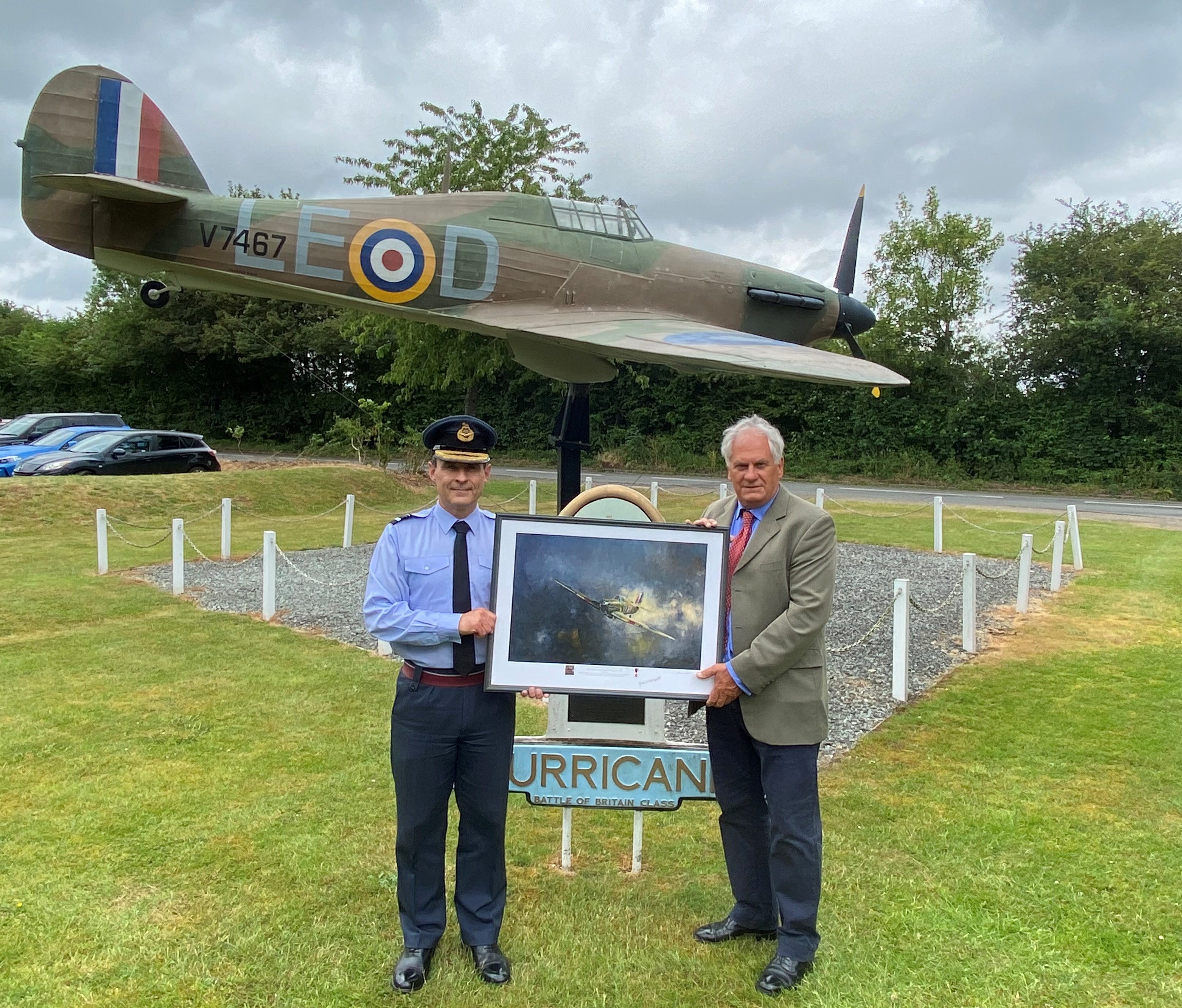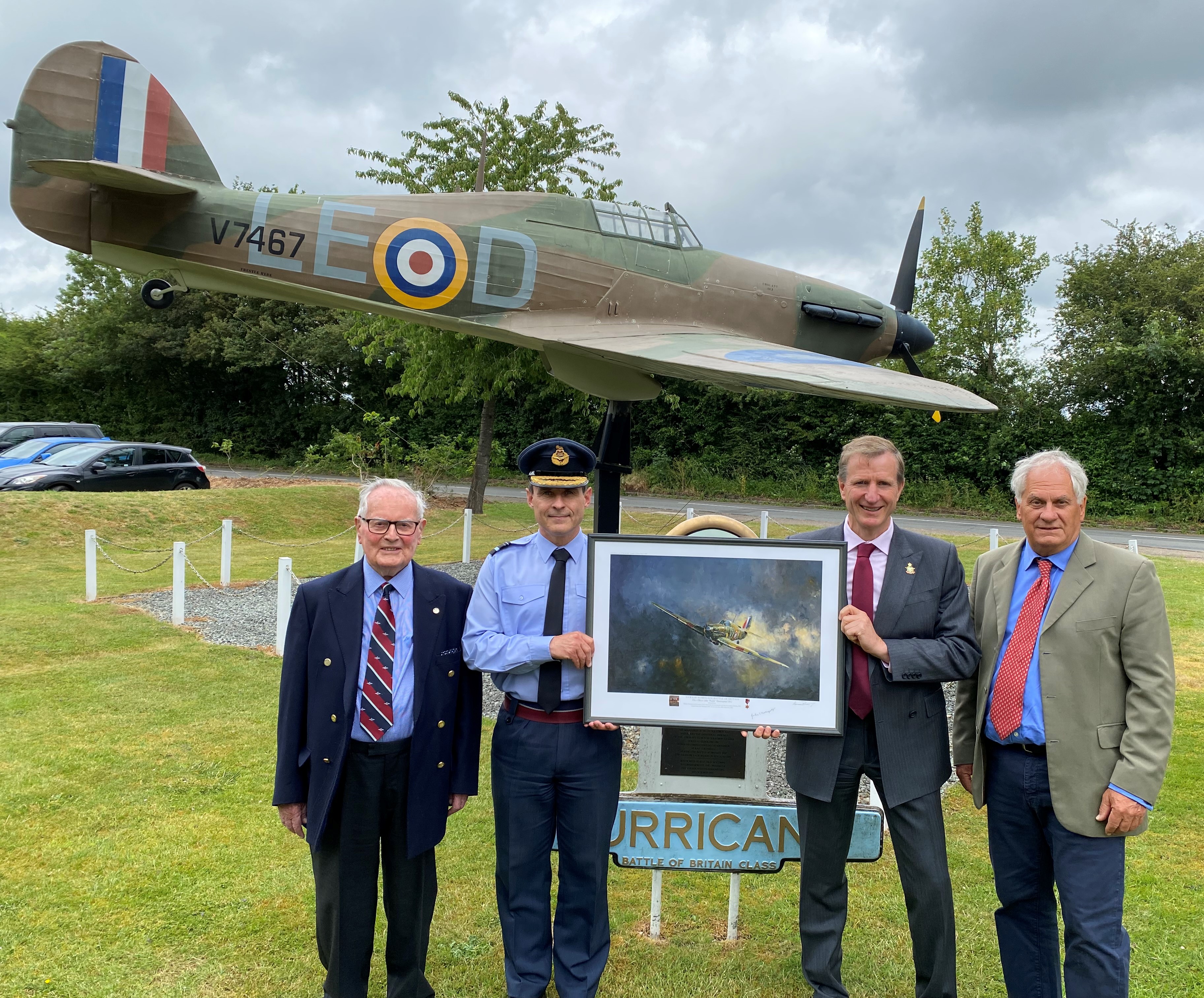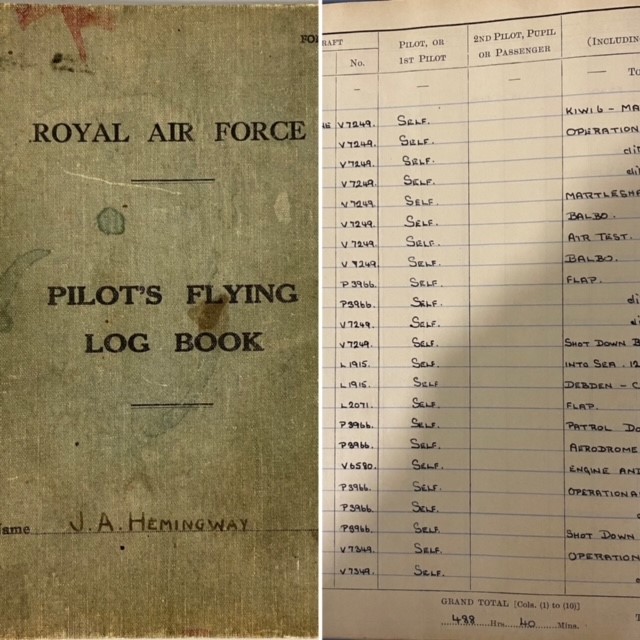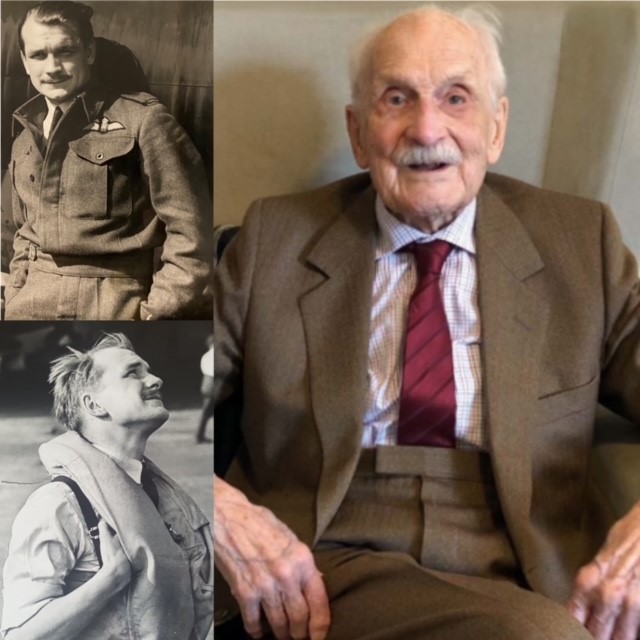“The painting of Hemingway in his Hurricane is there to depict everything and everybody that represented the Battle of Britain and those who put aircraft in the air.” Jon Stone

It was a proud day for RAF High Wycombe as AOC 1Gp AVM Mark Flewin accepted a painting of a Hurricane piloted by the last surviving pilot of the Battle of Britain, Gp Capt John Allman ‘Paddy’ Hemingway DFC.
Originally planned to celebrate the 80th anniversary of the Battle of Britain, former RAF Corporal, Carl Lamb commissioned artist Michael Rondot to do the painting. In the past he has commissioned five paintings which all have a common affiliation with the RAF and have been used for other military events. “It’s all about safeguarding and promoting our heritage,” commented Carl.

In May 2020 Terry Clark, the penultimate surviving airman from 1940 battle passed away, leaving Gp Capt Hemingway as the last known survivor; “Having been fortunate enough to meet Brian Hemingway (Paddy’s son) and ultimately Paddy himself it seemed appropriate that Paddy’s Hurricane should take the central role in the painting itself with the intention it represented everyone who served in the RAF at the time,” said Carl.
Currently in a nursing home in south Dublin and approaching his 104th birthday on 17 July, Gp Capt Hemingway is still “very compos mentis” according to his son, Brian, who travels to Dublin once a month to visit. Joining the RAF in March 1938, he fought in France prior to the Battle of Britain in 1940. He was with 85 Squadron and crash landed for the first time in May 1940, was shot down on 18 August at Pitsea Marshes, Essex, and again some eight days later on 26 August. His prized logbook, now kept by his son is a fascinating and enthralling piece of history that details Paddy’s many epic adventures and sorties. Paddy later joined 43 Squadron’s B Flight at Ravenna in Northern Italy in 1945 flying spitfires. It was at Copparo in April of that year that he was shot down for a fourth time.

Later service saw the courageous Gp Capt take up posts in the Middle East, the Air Ministry in London and a spell as Station Commander at RAF Leconfield, East Yorkshire in 1966. He retired from the RAF in 1969. The Gp Capt summed up his war service with, “I was lucky to survive the war, and good health has kept me going. However, if being the last draws attention, in a good way, to the Battle of Britain pilots and the rest of the RAF at that time, I am happy about that.”
.jpg)
Paddy’s Hurricane P3966 that crashed at Pitsea Marshes is currently being restored by Cambridge Restoration, who were able to utilise many parts that were dug up including one of the machine guns which was still functional as well as the all-important identity plate.

The signed print will take pride of place outside the AOC 1 Gp’s office at RAF High Wycombe. Another one is set to be auctioned to raise funds for another military flying project.
Also in attendance was Flt Lt Colin Bell, a 102-year-old ex-Mosquito pilot who regaled an invited audience with his wartime stories commented; “I always feel that I’m a member of the Royal Air Force family and it was a particular pleasure to be welcomed on arrival by AVM Mark Flewin and his fellow officers.”
.jpg)
No 1 Gp Command Warrant Officer, Master Aircrew Jon Stone who organised the event said, “Gp Capt Hemingway is the last living link between the Battle of Britain and its affiliation with 1 Gp. It is that affiliation between the past and the present particularly as we move forward with 5th Gen fighters, F35s, Typhoons that is particularly poignant.”








